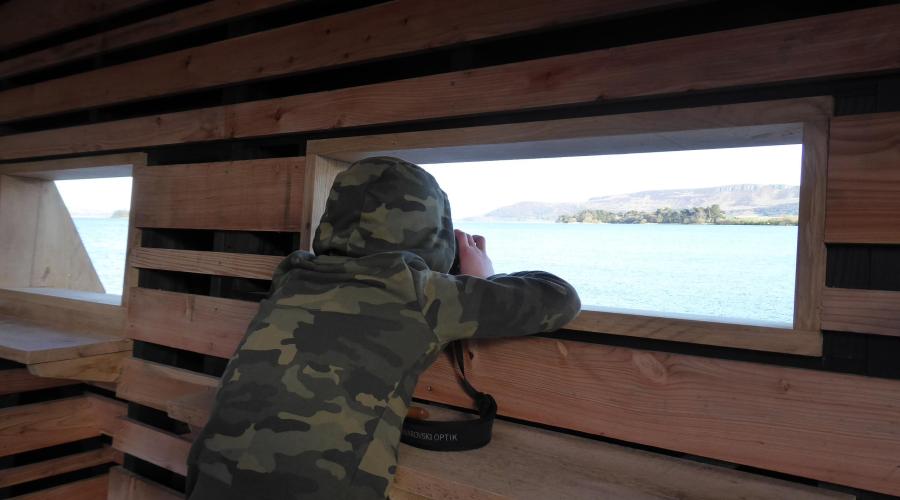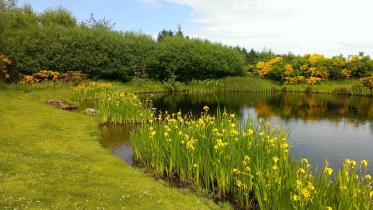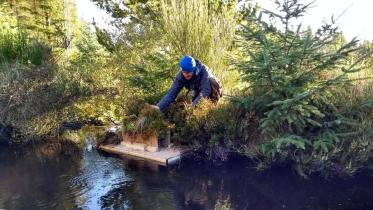
Loch Leven NNR - Visiting the reserve
Visit Loch Leven to experience a magical blend of wildlife and history.

For visitors
Our Loch Leven NNR leaflet is a good introduction to the reserve.
Wild camping at Loch Leven NNR
We have seen a big increase in the number of wild campers at Loch Leven. Please read the Scottish Outdoor Access Code before you go and remember to leave no trace.
Please note, fishing on the shoreline is not permitted.
Blue-green algae
Blue-green algae - We have seen great improvements in the water quality at Loch Leven over the past years, but blue-green algae still pose health risks when they form blooms on the water surface in warm summer months. Download our latest information - Health advice for blue-green algae bloom and follow the guidance provided on-site.
Canoeing, kayaking or paddleboarding at Loch Leven
Loch Leven is an internationally important site for water birds throughout the year, those wishing to canoe, kayak or paddleboard should follow our Water Access Guidance. This means avoiding the bird sensitive areas which includes The Green Isle at Burleigh.
Please help us to protect Loch Leven’s rich and special nature by following good practice.
Please note that between September and March we advise against watersports due to the large number of birds on the Loch. For more information please see our Water Access Guidance.
There is no access at any time for either motorised or sail craft.
To protect against accidentally introducing invasive species onto the reserve all kayakers and anglers should ensure their equipment has been prepared following the simple Check, Clean, Dry advice provided on the GB Non - Native Species Secretariat website. You can find out more about invasive non-native species on the Scottish Canoe Association website.
Trails for all
You can access most of Loch Leven on the Heritage Trail – a 21-kilometre circuit around the loch. It is traffic-free and you can walk, run, bike or ride along the whole length. The Heritage Trail is suitable for walkers of all ages and abilities. It is also suitable for cyclists, wheelchair users and motorised scooter users.
If you would prefer a shorter walk, just explore part of the trail on one of these walks.
If you would like to take a canoe or kayak onto the loch, please read our water based access guidance before visiting.
Organisers of events proposing sponsored walks, runs and similar events wishing to use the trail should consult our event guidance.
Loch Leven NNR Tufty Brass Rubbing Trail Leaflet - join 'Tufty the Tufted Duck' around the trail at Loch Leven National Nature Reserve! There are 10 Brass Rubbing Posts of Tufty and friends that circumnavigate the 13 mile circular Loch Leven Heritage Trail. Print off the leaflet below, take some paper and some crayons and see if you can find Tufty and friends on your adventure!
Toilets
There are toilets at Kirkgate Park and the Boathouse Pier (seasonal) in Kinross. There are also toilets at the RSPB visitor centre on the south side of the loch.
Wildlife hides
There are three hides around the reserve. All are wheelchair accessible and can be accessed from the Heritage Trail. There is a hide at Burleigh Sands, one at Levenmouth, and a third just south of the Boathouse car park.
The RSPB has hides on the wetlands it manages at the south end of the loch.
Visitor centre
The RSPB has a visitor centre on the south side of Loch Leven. It has good views of the loch, viewing hides and woodland trails. There are also facilities here including toilets, a shop and café.
Seasonal highlights
A visit to Loch Leven is worthwhile at any time of year. Summer is best for breeding ducks, and autumn and winter for wildfowl.
Spring
The sweet vanilla scent of the holy grass is an early sign of spring. It was once used to sweeten church doorways.
Spring marks a changeover on the loch, as native birds begin breeding, summer visitors start to arrive and winter guests prepare to leave. Look out for goldeneye and great crested grebes displaying.
Summer
Summer brings lots of new life, with tufted ducklings dabbling in the loch margins. The wetlands are in flower. Dragonflies and damselflies dart around pools at the edge of the loch. Palmate newts have been found on the reserve, and an explosion of non-biting chironomid midges provide food for brown trout.
Autumn
Thousands of moulting birds gather in the safe haven of Loch Leven. They are mainly swans and ducks, which lose their ability to fly. In October, around 10% of the world population of pink-footed geese arrive at Loch Leven. Come early in the morning or late in the evening to see them heading off to feed or returning to roost.
Winter
Winter is a time for crisp walks, with scenic views over a winter wonderland. The wetlands are still teeming with tufted ducks, teal, greylag and pink-footed geese, and much, much more!
Getting here
Loch Leven lies between Edinburgh (50 kilometres) and Perth (32 kilometres). The nearest town is Kinross (just off the M90). You can access the reserve from several places.
By car
Kinross. There is parking available at the Boathouse Pier and Kirkgate Park in Kinross.
KY13 8UF is the nearest postcode for the Boathouse Pier. Grid reference: NO 122017.
KY13 8ET is the nearest postcode for Kirkgate Park. Grid reference: NO 128017.
Burleigh. There is parking at Burleigh Sands, on the north shore of Loch Leven (close to the A911).
KY13 9EZ is the nearest postcode. This is centred on a farm north-east of the car park. Grid reference: NO 133040.
Findatie. There is parking at Findatie on the B9097, near the mouth of the River Leven.
KY13 9LY is the nearest postcode. Grid reference: NT 170992.
RSPB Loch Leven
The reserve can also be accessed at the RSPB’s visitor centre. This is 3 kilometres east of junction 5 on the M90. On leaving the M90, turn left then and right onto the B9097. Follow this for 3 kilometres to the RSPB centre.
KY13 9LX is the nearest postcode. Grid reference: NT 159990.
By public transport
The nearest bus stops are in Kinross and Ballingry.
Map
Near the M90 at Kinross, with car parking at The Pier and Kirkgate Park, Kinross; at Burleigh Sands, off the Lethangie minor road; at Findatie, off the B9097; and at RSPB Loch Leven, off the B9097.
Find out more on
Related Links
- Designation and management of Scotland’s National Nature Reserves
- Learn more about other protected areas





